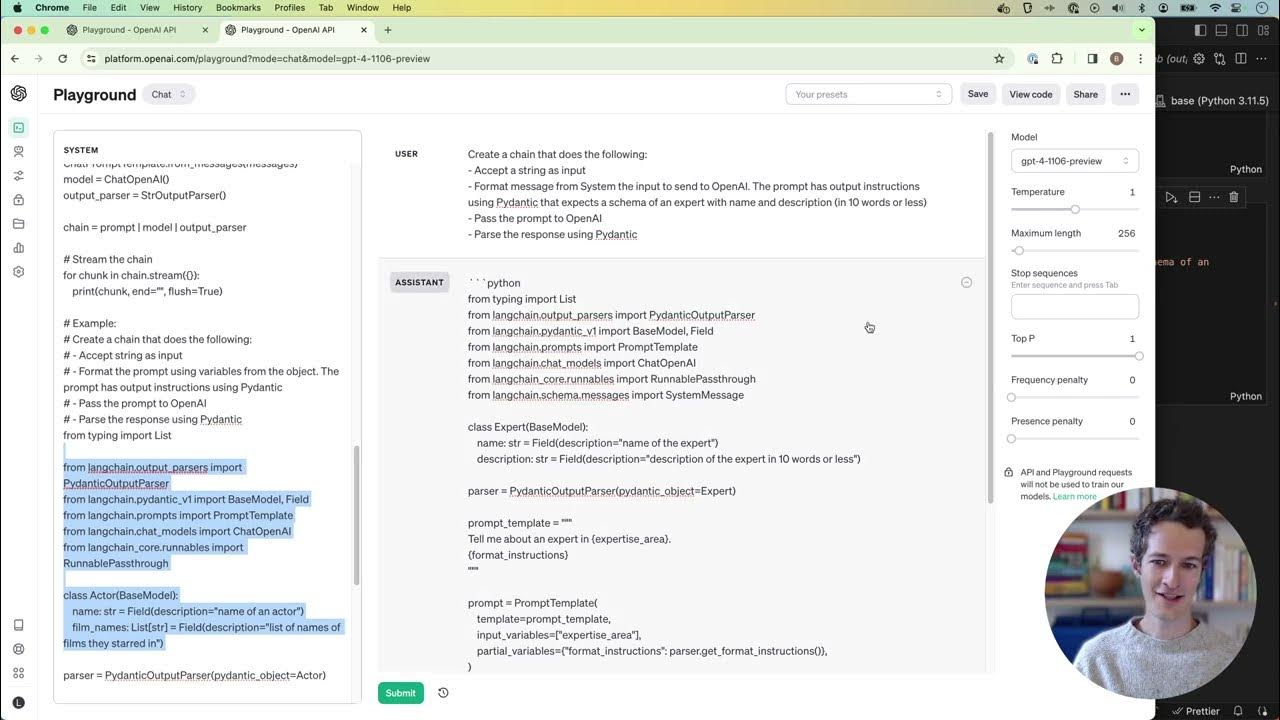Procedural Generation: Programming The Universe
Summary
TLDR在这个视频中,我们跟随孤独的编码者一起探索如何通过程序生成一个宇宙。视频展示了如何使用伪随机数生成器来创建一个持续且一致的宇宙,其中包含了恒星、行星和卫星。通过控制随机性,我们可以在不需要存储整个宇宙的情况下,即时生成和互动。视频还讨论了随机数生成器的选择,以及如何通过设置种子来保持宇宙的一致性。最后,通过一个简单的星系类和一些用户输入处理,我们能够在屏幕上可视化这个宇宙,并与之互动。
Takeaways
- 🌌 视频介绍了如何通过程序化生成技术创建一个虚拟宇宙。
- 🎮 灵感来源于经典游戏《精英》系列,展示了如何在有限的内存中呈现一个广阔的宇宙。
- 🔄 宇宙的生成是持久的,无论从哪个方向浏览,宇宙的星系都会保持一致。
- 🧮 使用了伪随机数生成器来控制宇宙的生成过程,确保每次生成的结果都是一致的。
- 📊 通过屏幕坐标作为随机数生成器的种子,实现了基于位置的随机数序列。
- 🚀 视频讨论了随机数生成器的质量,以及如何通过数学方法控制随机性以创建有意义的资源。
- 📚 介绍了C++标准库中的随机数生成器,以及如何使用它们来生成高质量的随机数。
- 🔧 使用了Lemaire随机数生成器,因为它既快速又能够产生高质量的随机数。
- 🌠 创建了一个星系类来表示宇宙中的星系,并在构造函数中完成所有生成工作。
- 🪐 展示了如何通过随机数生成星系的属性,如星的大小、颜色、行星数量和特性。
- 🖼️ 通过用户输入和鼠标位置,可以在宇宙中导航并选择特定的星系进行查看。
- 🔄 视频强调了程序化生成的关键在于能够一致地生成随机数序列,从而实现宇宙的一致性和可预测性。
Q & A
视频开头提到的Elite系列游戏是什么?
-Elite系列游戏是一系列太空飞行模拟游戏,最早在1980年代推出,以其在内存有限的小型机器上呈现整个宇宙而著称。
为什么视频作者决定创建一个模拟Elite Dangerous效果的小型应用程序?
-视频作者决定创建这个应用程序是因为他被Elite Dangerous游戏中庞大的宇宙所吸引,该游戏的宇宙如此之大,以至于无法完全存储在计算机上。
视频中提到的“程序生成”(procedural generation)是什么?
-程序生成是一种技术,它使用一系列复杂的方程式根据输入参数(如鼠标坐标)动态生成内容,而不是预先存储所有内容。这允许在有限的内存中创建看似无限的宇宙。
视频中提到的“伪随机数生成”(pseudo-random number generation)有什么特点?
-伪随机数生成器不能真正生成随机数,但可以生成看似随机的数列。这些数列可以通过设置种子(seed)来重复生成,这对于保持程序生成内容的一致性至关重要。
视频中为什么作者对“roguelikes”和“Minecraft”等游戏的随机内容生成持有异议?
-作者认为这些游戏生成的随机内容实际上是预先存储并需要时召回的,这与他心中的程序生成定义不同。他更倾向于“自动生成”(automated generation),即根据需要即时生成资源和资产。
视频中提到的“Lemé随机数生成器”(Lemé random number generator)有什么优势?
-Lemé随机数生成器被认为是相当健壮且计算速度非常快的随机数生成算法,适合用于需要快速生成随机数的程序生成应用。
视频中如何实现星系的程序生成?
-视频通过创建一个星系类,使用Lemé随机数生成器根据星系在宇宙中的位置(X和Y坐标)作为种子来生成星系。这包括决定星系是否存在、大小、颜色以及围绕它的行星数量等属性。
视频中如何处理用户在宇宙中的移动和探索?
-视频通过创建一个“星系偏移量”(galaxy offset)向量来模拟用户的视角在宇宙中的位置。用户可以通过键盘输入(如W、A、S、D键)来移动这个偏移量,从而在宇宙中探索。
视频最后提到的“改变宇宙状态”的问题是什么?
-这个问题涉及到如何在程序生成的宇宙中实现持久性变化,例如玩家在Minecraft中改变方块状态。这在视频中没有详细解释,但作者提到这将是未来视频的主题。
Outlines

This section is available to paid users only. Please upgrade to access this part.
Upgrade NowMindmap

This section is available to paid users only. Please upgrade to access this part.
Upgrade NowKeywords

This section is available to paid users only. Please upgrade to access this part.
Upgrade NowHighlights

This section is available to paid users only. Please upgrade to access this part.
Upgrade NowTranscripts

This section is available to paid users only. Please upgrade to access this part.
Upgrade NowBrowse More Related Video
5.0 / 5 (0 votes)






